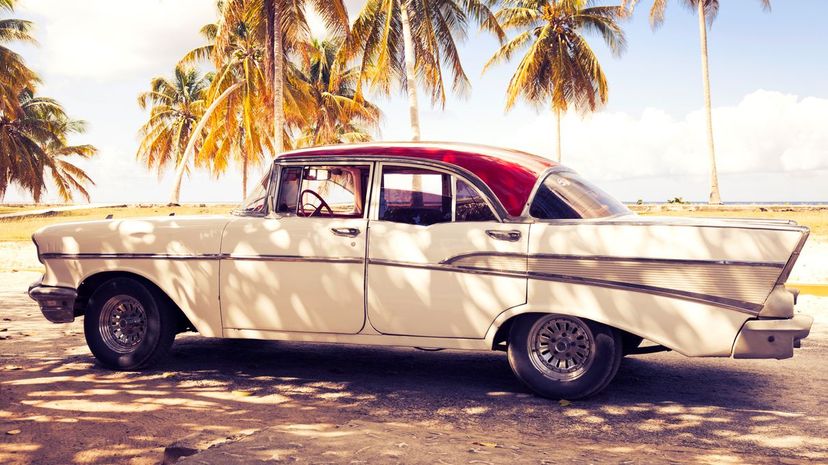
About This Quiz
Is it even possible to not love at least a few of the cars that came out in the 1950s? More than any other decade, the '50s were about style and truly cutting loose. The car design that followed in the '60s and the '70s couldn't have happened without the advances both technically and stylistically in the '50s. This was the first post-war decade when resources were free and abundant to allow automakers to do what they wanted. When drivers were able to make their choices felt in the market place. Cars didn't have to be just functional and utilitarian. They could be like the Corvette, all sleek and sexy. They could be powerful like the Studebaker Golden Hawk or the Chrysler Imperial. They could be small and efficient like the Fiat 500 or the Mini. Just look at that variety!
If you have a passion for the cars of the '50s, whether it's some notable failures like Ford's lamentable Edsel, the forgotten gems like the Henry J and the Jowett Jupiter, or the icons that have transcended time like the Cadillac Eldorado and the Chevrolet Bel Air, then it's time to put your knowledge to the test and take the quiz!
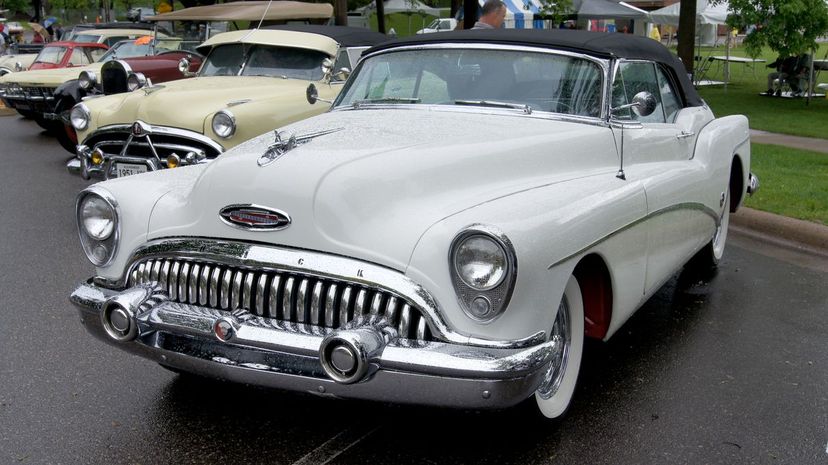
Buick introduced the Skylark in 1953 to celebrate the 50th anniversary of the company, and even though it was an expensive car based on standards at the time, $5,000 then and over $48,000 in today's dollars, it still sold pretty well.
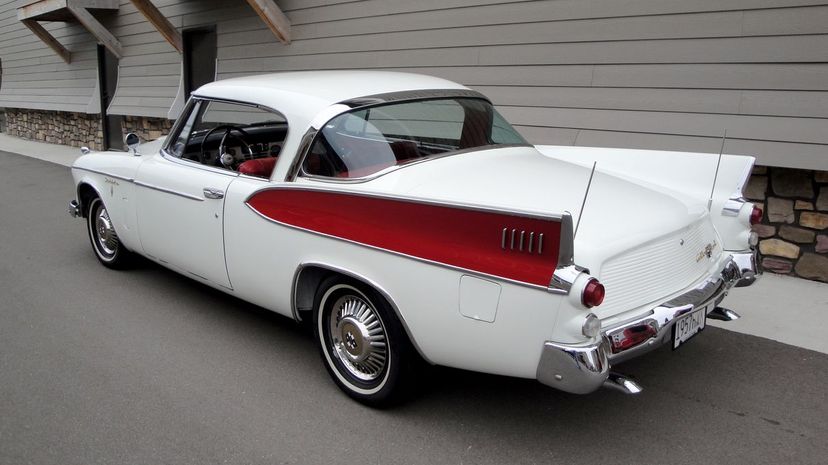
Studebaker's Golden Hawk was part of a larger series known as the Hawk Series of vehicles of which there were several. Aside from the Golden, Studebaker produced the Silver Hawk, Flight Hawk, Power Hawk, Sky Hawk, Gran Turismo Hawk, Packard Hawk and just the Hawk.
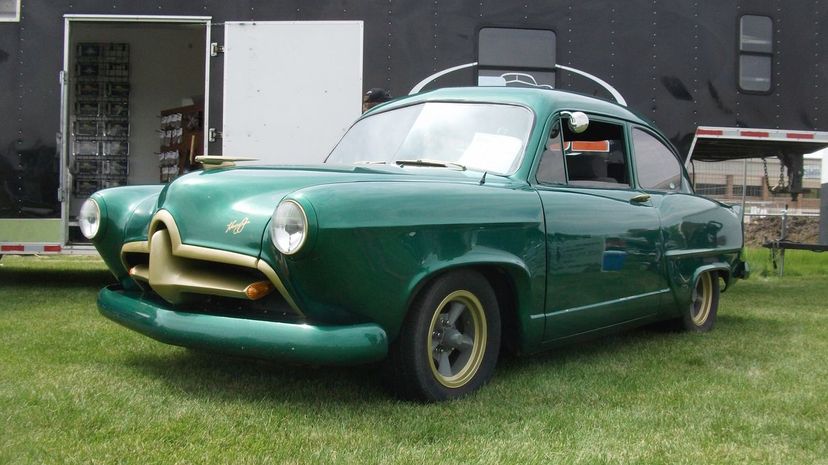
The Henry J is named for the chairman of the Kaiser-Frazer Corporation, Henry J. Kaiser. The Henry J was designed to truly be a car for everyone, cheaper than any other car on the market at only $1,300. To make it work at such a low cost it had fixed rear windows, there were no arm rests or a glove box, and the trunk didn't open.
Advertisement
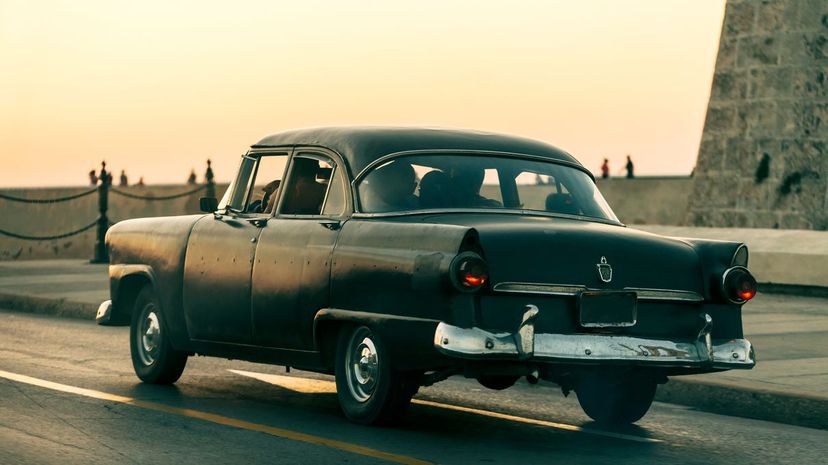
Ford is believed to have lost about $350 million on the Edsel in the late 1950s. While the car actually performed fairly well, it was way over-hyped leading up to its debut and the fact it was considered to be remarkably ugly did it no favors at all.
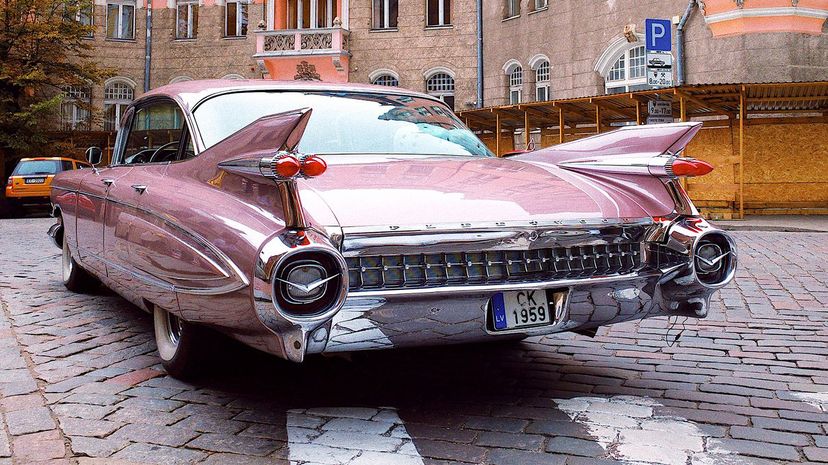
In 1954, Cadillac started using more pointed tailfins in contrast to the rounded ones previously used. By 1959, the Cadillac Eldorado was sporting fins so dramatic they looked like rear stabilizers on an airplane.
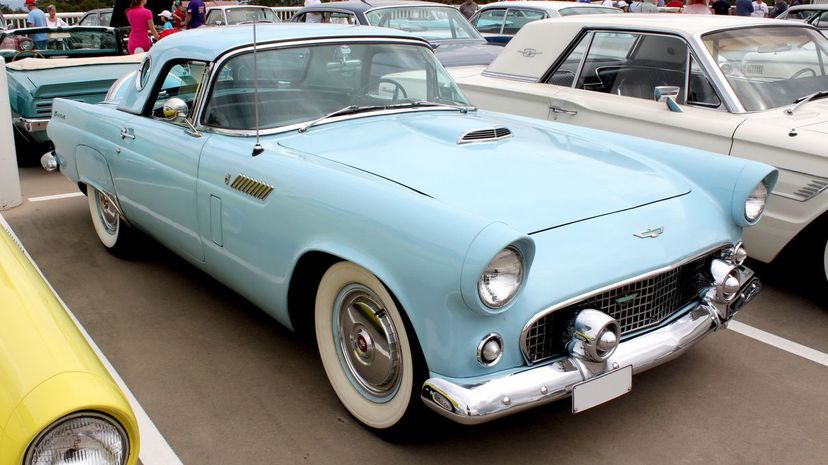
Ford had been doing well in the sports car marketplace when it introduced the Thunderbird in 1955. And while it looks like it may have been able to compete with other sporty convertibles of the era, Ford positioned it as a family luxury vehicle and even included an extra row of seats to sell the idea.
Advertisement
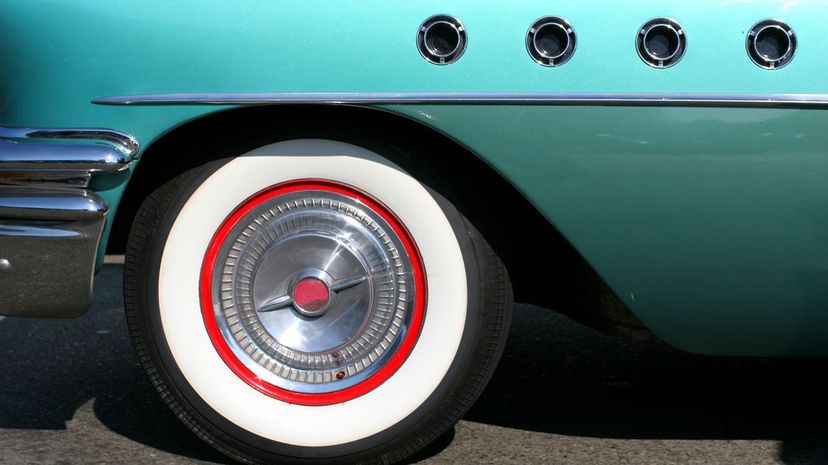
The Kaiser Darrin was only produced in 1954 and only 435 were made in that year. The Darrin earned its place in history for being the first American car produced with a fiberglass body and for those unusual sliding doors.
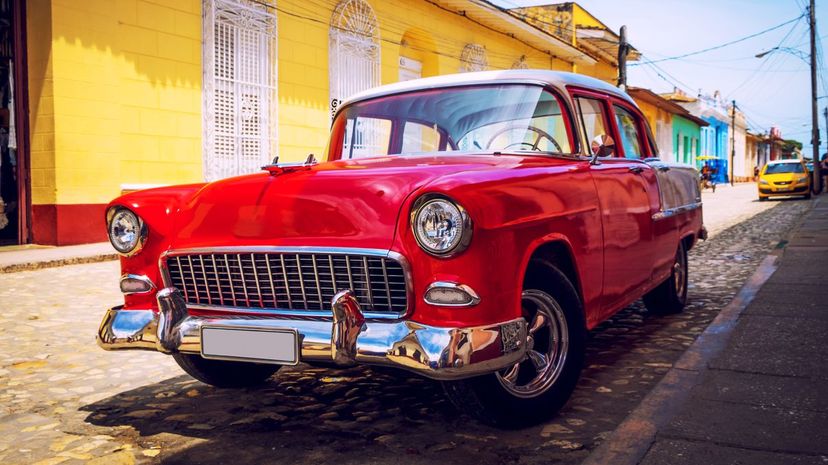
The sinister car Christine was a 1958 Plymouth Fury in King's book. Weirdly, ads for the movie listed it as a '57 Fury. Director John Carpenter could only find so many Furys for the movie, so he also modified a few Belvederes and Savoys to fit the bill.
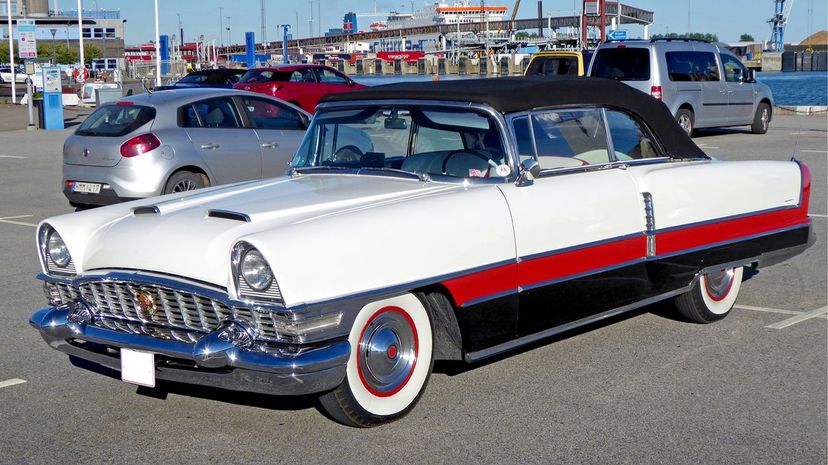
The Packard Caribbean was only available as a convertible from 1953 through 1955. In its final year Packard gave the option of a hardtop. Unfortunately, production ended after that year because Packard ended production in Detroit that year.
Advertisement

Chevy makes the Corvette to this day and it's one of the most popular cars it's ever made and one of the most recognizable and iconic. That's a lucky turn for Chevy since, when it debuted in 1953, it was a pretty unpopular vehicle that suffered poor sales and was almost cancelled.
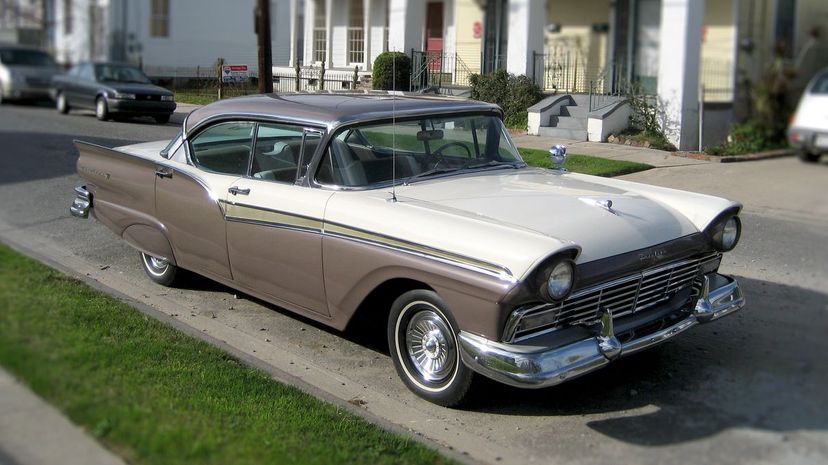
Ford made the Fairlane starting in 1955 in six different models. The Crown Victoria Skyliner model came complete with a tinted plastic roof to let the sun in while the Sunliner version was just a regular convertible.
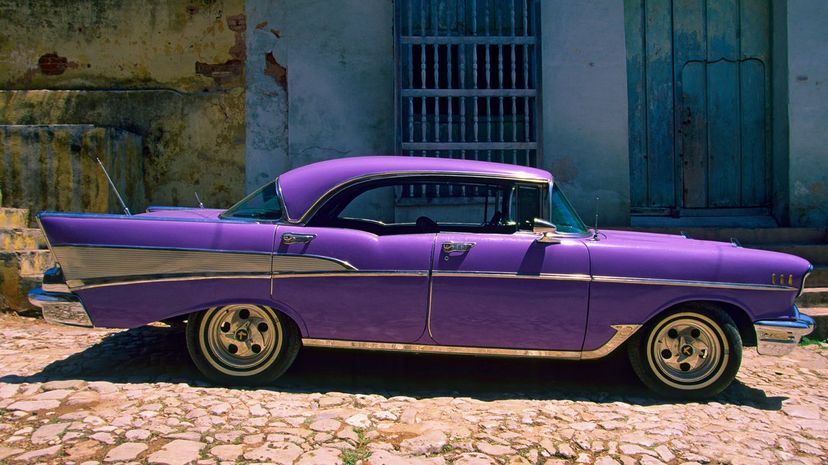
Chevy replaced its 210 model with the Biscayne for the 1958 model year. Though not as popular as the Malibu or the Bel Air, the Biscayne followed the same trend in naming and is named after a place called Biscayne Bay in Florida.
Advertisement

First made in 1955 in a run that lasted until 1962, the Triumph TR3 was much more successful than the TR1 or TR2 that came before it with nearly 75,000 units sold. Though it's clearly a two-seat convertible, you could get a bolt on steel hardtop and even a back seat.
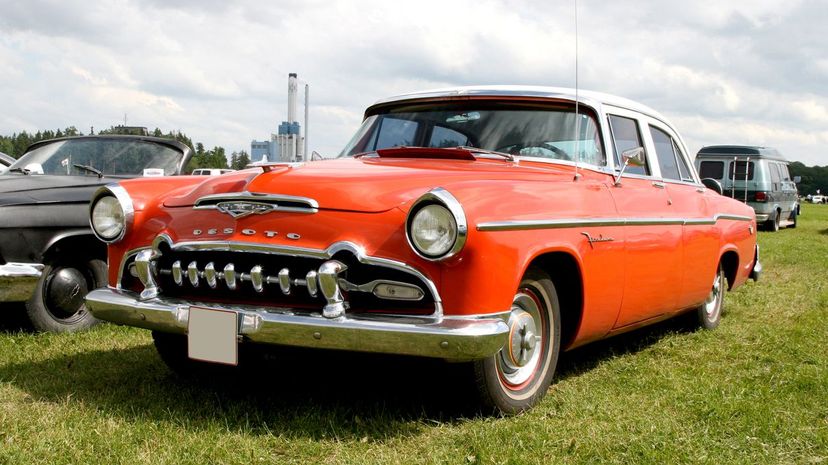
The DeSoto Firedome was made from 1952 to 1959. The first model year came decked out with a 160 hp Hemi V8 engine and they upped the ante to 170 horsepower by the next year. Top speed was 100 miles per hor, which wasn't terrible for a 3,700 pound car.
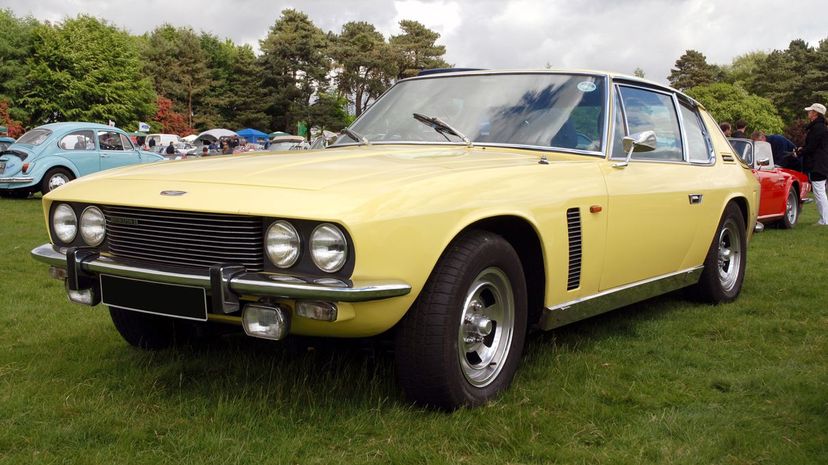
If you thought the Jensen Interceptor was a car from the 1960s you're both right and wrong. Jensen's most famous Interceptor was made from 1966 to 1976, but the car was originally made from 1950 to 1957.
Advertisement
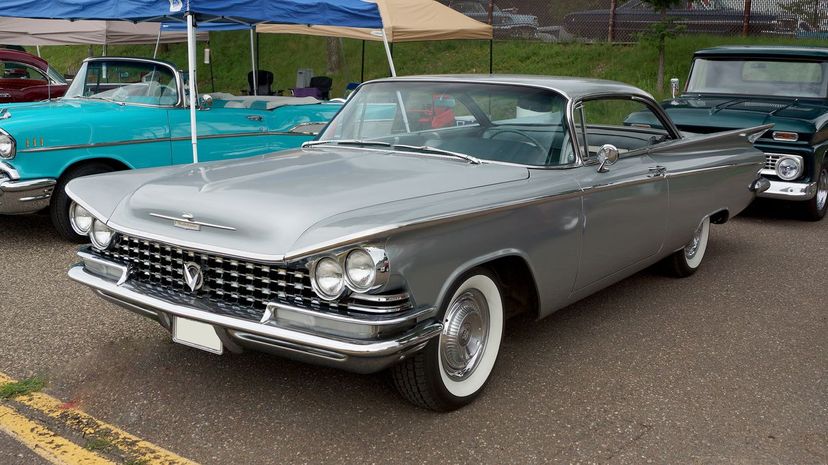
The Buick LeSabre was officially crowned in 1959 though Buick had been using the name LeSabre since 1951 when it introduced a car by that name as a concept car. The Buick Special, which had been in production since 1936, became the LeSabre in 1959.
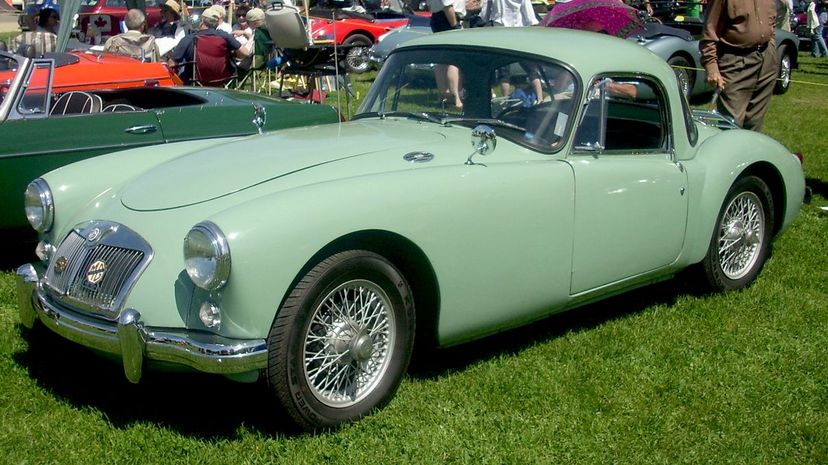
The MG MGA 1500 was outfitted with a 1489 cc engine that produced 68 horsepower, later upgraded to 72. That may not seem like much compared to today's cars that get up to several hundred horsepower, but it was still able to hit 97.8 miles per hour.
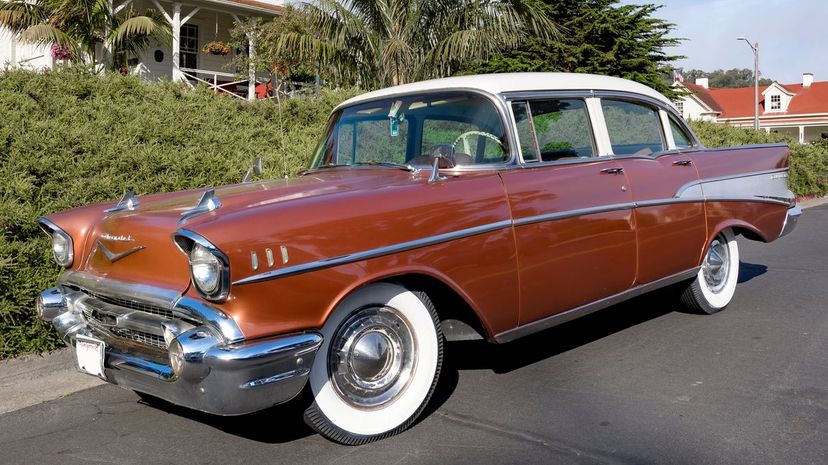
Chevy's Bel Air is one of the most iconic cars of the era and still favored by collectors today. In particular, the second generation is highly prized for its Ferrari-inspired grille and 265 cu. in V8 engine.
Advertisement
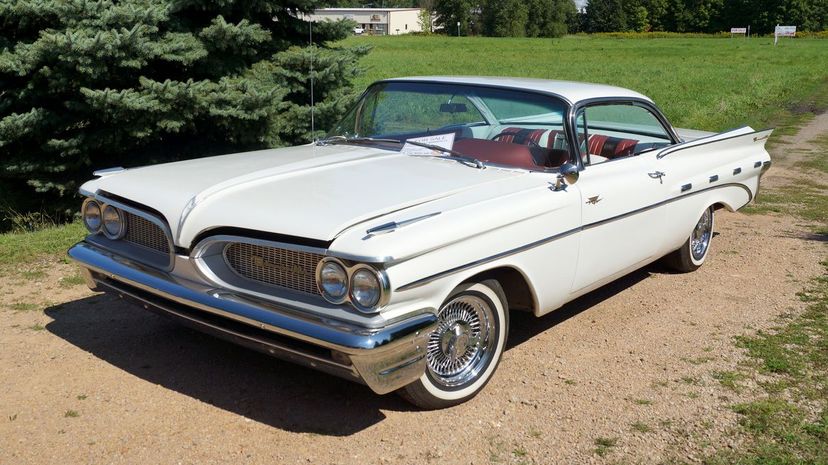
The Pontiac Bonneville was named in honor of the Bonneville Salt Flats in Utah where most land speed records have been set for years now. The Salt Flats themselves were named in honor of Benjamin Bonneville, an Army officer from the 1800s.
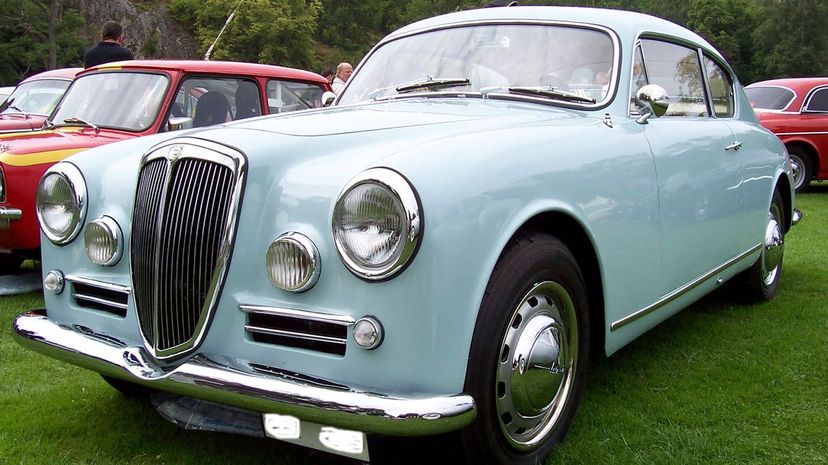
Italian automaker Lancia started producing the Aurelia in 1950. The car is named for a Roman road called the Via Aurelia, or the Aurelian Way, that leads from Pisa to Rome and was constructed back in the year 241 BC.
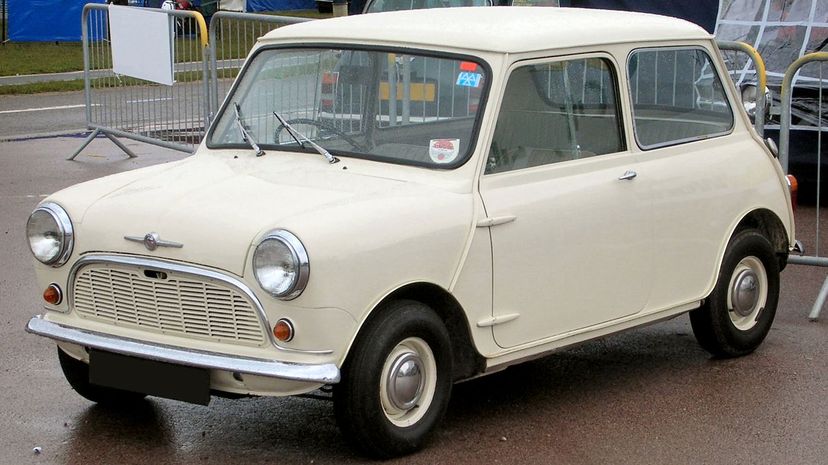
The Mini sneaked in at the tail end of 1959, debuting in August of that year before it went on to become one of the most iconic and visually distinct cars ever made. Despite the tiny size, its design which included a transverse engine and front-wheel drive meant 80% of its floor space was usable.
Advertisement
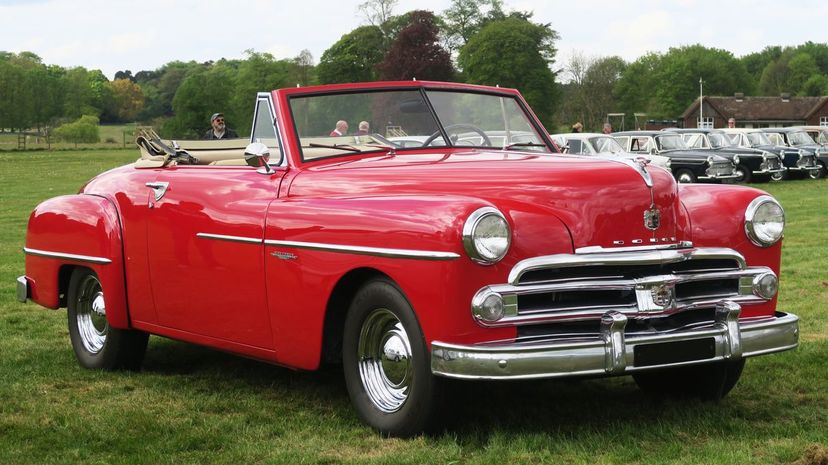
The dodge Coronet debuted in1 949 but in 1953 the car got a serious overhaul which included the supremely powerful 241 cu. in Hemi engine called the "Red Ram." This was the first of the Hem engines that helped it produce 140 horsepower and 4,400 rpms.

The Oldsmobile 88 was released in 1949 but the second generation in 1954 got a serious overhaul with that Rocket V8 engine. By 1956 the Super 88 model had 240 horsepower under the hood. In 1957 it was jacked up to 371 cu. in engine with 277 hp.
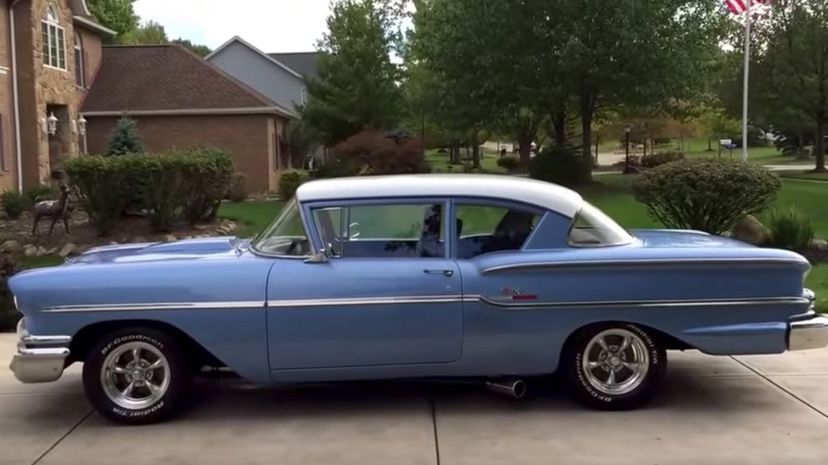
Chevy's Delray was introduced as a lower-price, no-frills option for buyers who weren't ready to commit to a higher-priced Biscayne or Impala. Thanks to its lower price, it had fewer interior and exterior options which made it a prime choice for fleets like police around the country.
Advertisement

The Hudson Hornet was in production from 1951 to 1954 and was notable for having a step-down design. The floor pan was recessed so that when you opened the door you could actually take a step down into the car, unlike most automobiles.

Nash began producing the Rambler in Wisconsin in 1950. Nash's goal was to compete with the Big 3 automakers by making a car that could still seat 5 passengers but would be smaller, lighter and cheaper to produce, thus passing savings onto the buyers.
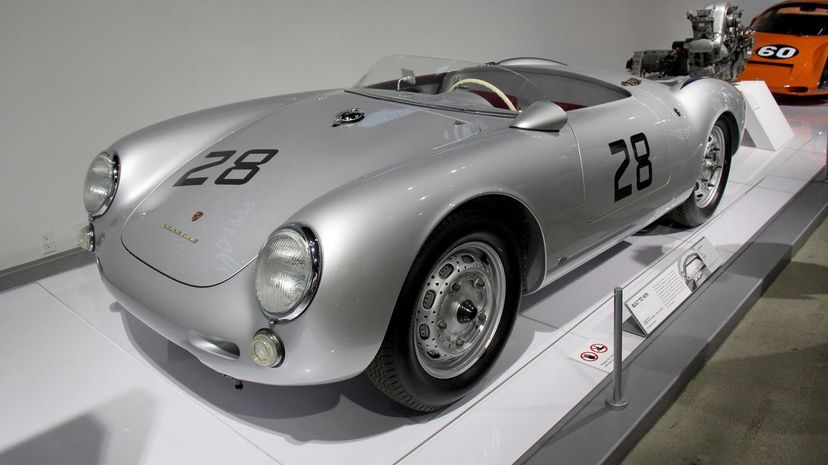
James Dean had one of the first 90 550 Spyders ever made. He had it custom painted with the name "Little Bastard" written on the rear cowling. Dean was on his way to a racing event when he crashed on California State Route 46.
Advertisement
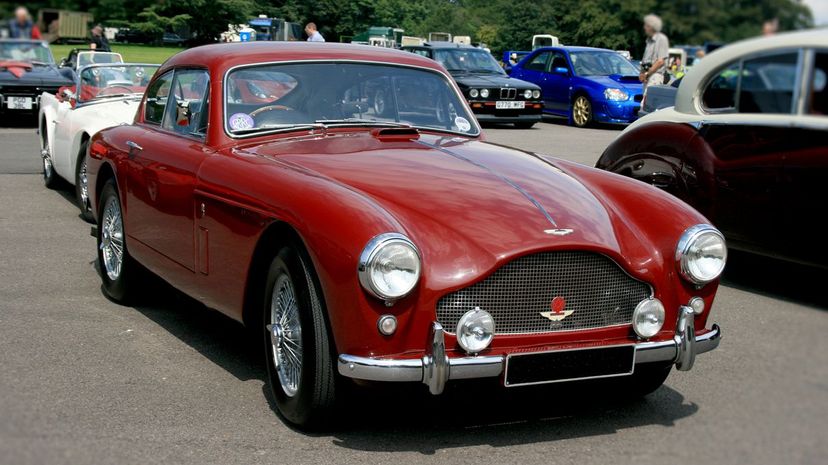
Aston Martin's DB4 started production in 1958 . In 1959 they also released the DB4 GT Zagato, a performance version of the car that had 302 horsepower and could hit 151 miles per hour, going from 0 to 60 in just over 6 seconds. At the time it was the fastest production car in the world.

The French-made Citroen DS was an immensely popular vehicle that sold nearly 1.5 million units in its time. It was the first mass-produced car with disc brakes and was renowned for its futuristic design by 1955 standards.
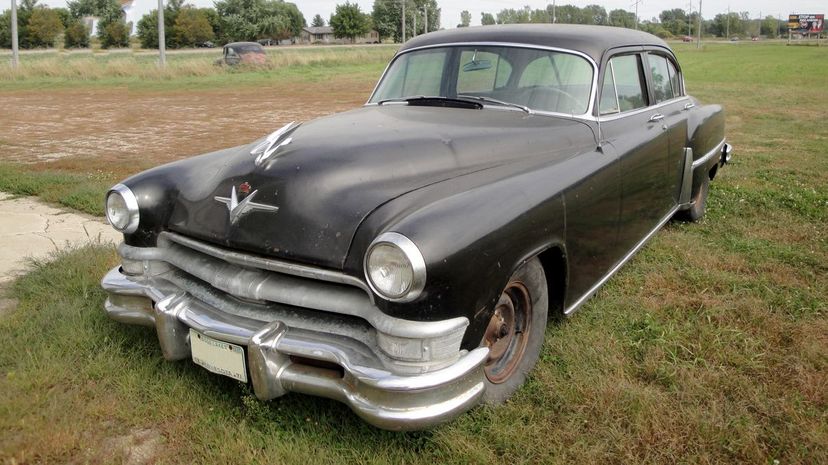
Chrysler had been making the Imperial since 1926 but it very definitely evolved over the years. The 1953 model was the first car since 1941 to have air conditioning. The system, called Airtemp, recirculated air and could remove smoke and dust with little noise and no stale air smell, either.
Advertisement
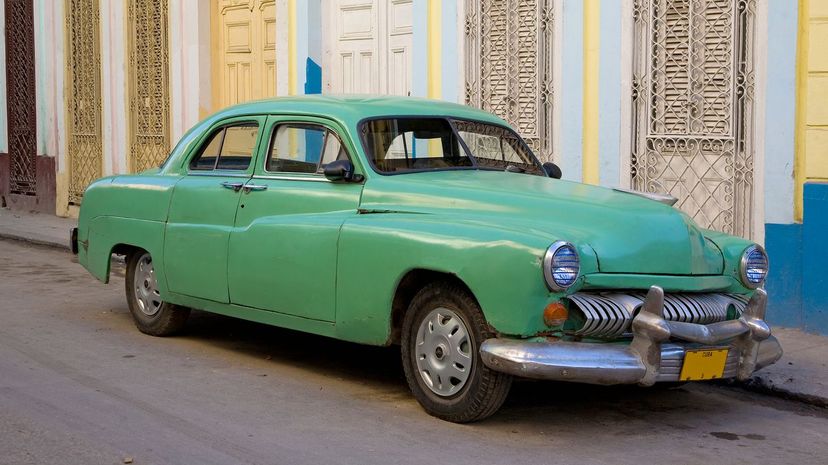
One of the most stylish and coveted sports cars of the era, the Jaguar XK150 was mostly available as a two-seater but you could get a three-seater as well, with that tiny third seat crammed in the back for an unlucky passenger.
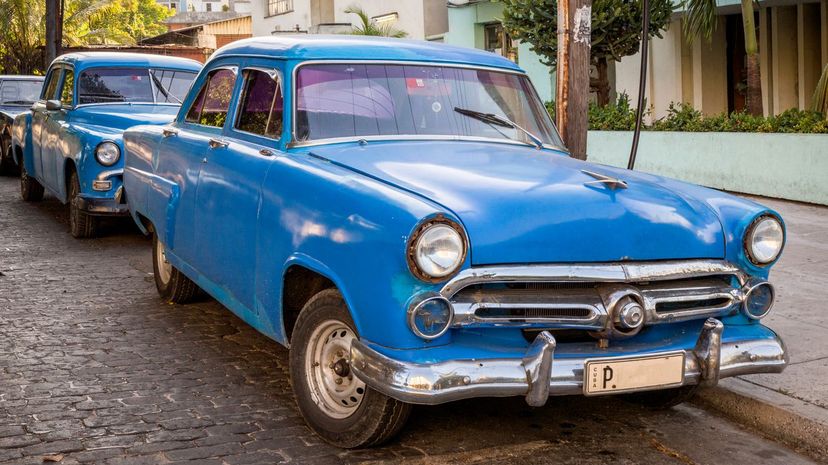
Lincoln Continentals have been produced across several generations, the first of which dates all the way back to 1939. Mark II was the model made in 1956 and 1957. As a nearly completely hand-built car, they were so expensive to build that Ford took a loss on each one sold.
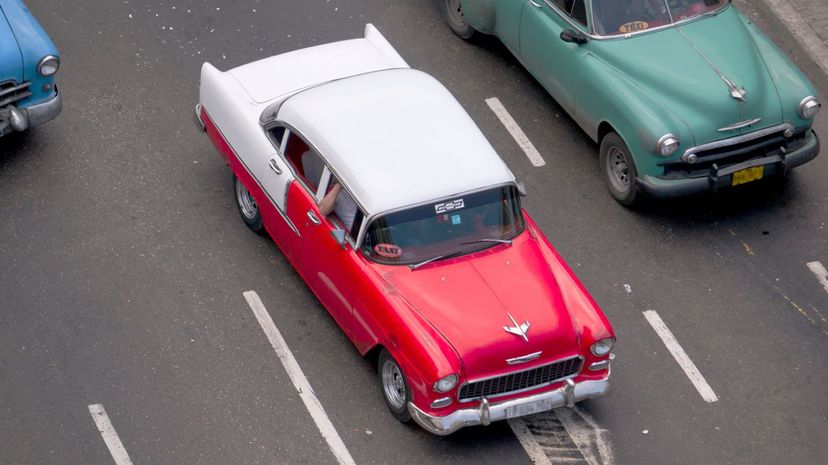
One of the most beautiful cars of the 1950s by far, was the Mercedes-Benz 300SL. First made in 1954, the 300SL was the fastest production car of the time with a top speed of 163 miles per hour, something even a good number of modern cars can't match.
Advertisement
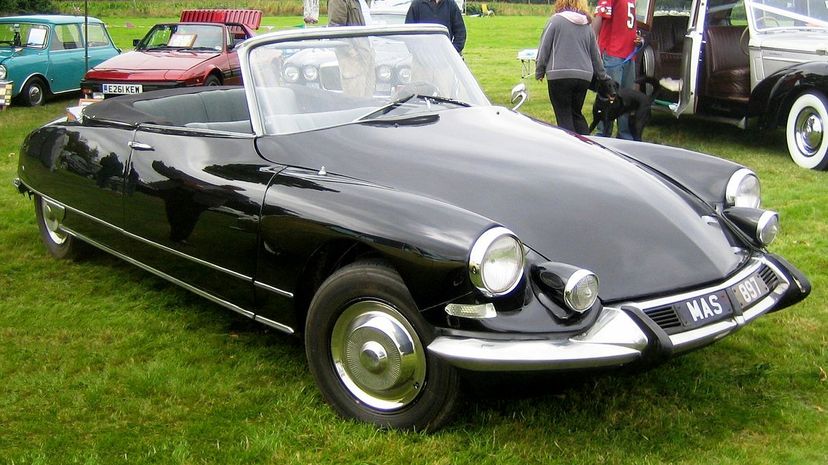
The tiny Fiat 500 got its name from its 500 cc engine (which actually was a 479 cc engine, but close enough). The roof was made of a foldable fabric. A year later the updated engine produced 21.2 horsepower and a top speed of 65 mph.
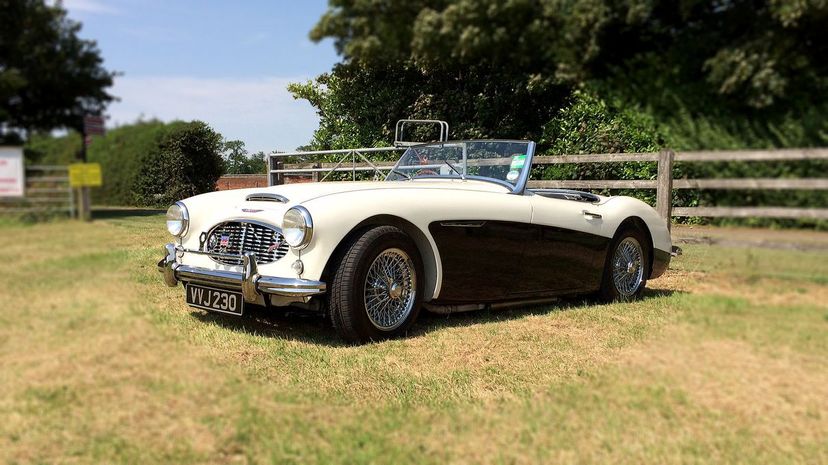
The Continental was the performance version of the Bentley R-Type and it was capable of speeds of up to 120 miles per hour, which must have been pretty intense for four passengers in the '50s. These days if you can find one it'll cost you over $1 million, probably.